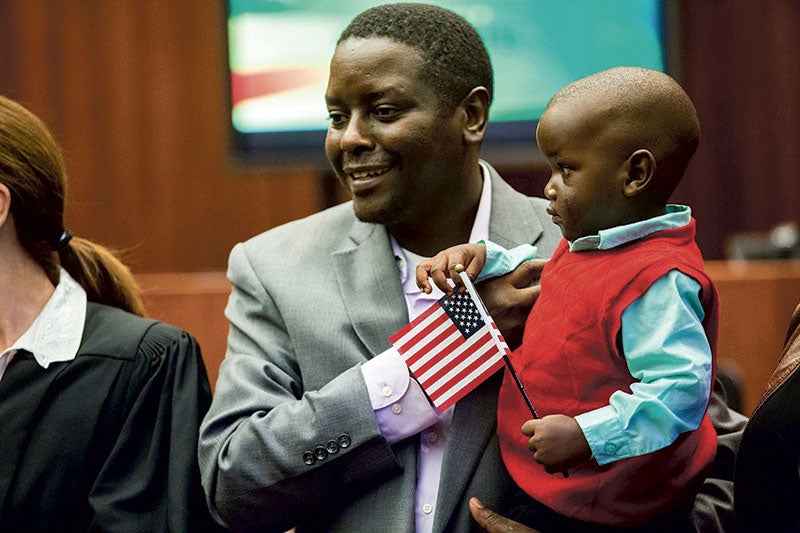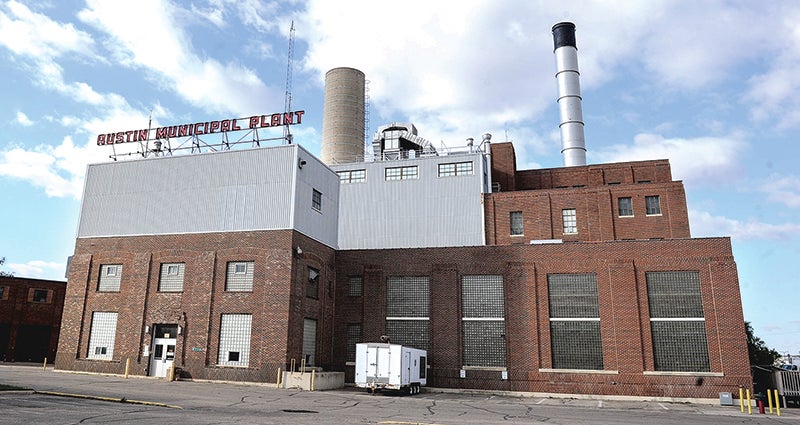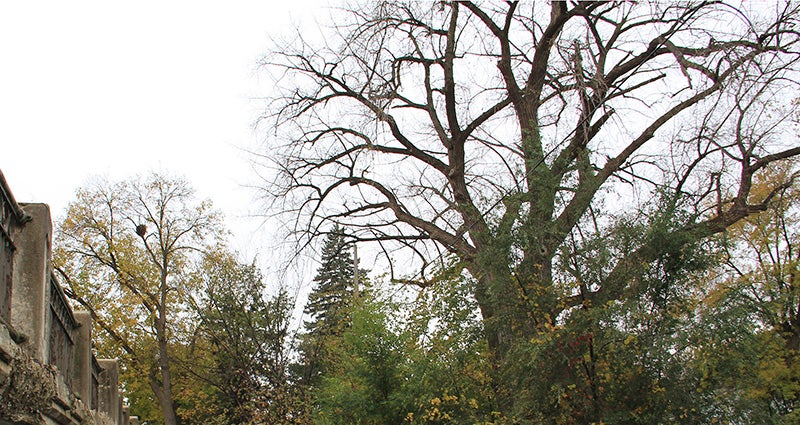Vision 2020, county discuss challenges
Published 1:01 pm Sunday, March 6, 2016
Mower County and Vision 2020 leaders came together last week to share some challenges the community is facing today and potential hope for the future as an initial way to spark conversations about future collaborations.
County Board Chairman Polly Glynn and County Coordinator Craig Oscarson called the meeting a good way to gain knowledge and ideas for ways to cooperate.
“What we’re hoping today is to draw a little education not only commissioners but to others who are attending the meeting in terms of the county’s financial status and some of the things that are driving our budgets higher than we’ve seen in normal years,” Oscarson said.
Several city and community leaders attended the meeting, where no decisions were made. It was largely a sharing and educational session.
“What we want to get from Vision 2020 is to start a more vibrant discussion about, are there Vision 2020 initiatives that the county should be participating in, and if so, how?” Oscarson said.
“We’re trying to make a little logical sense to how do we address Vision 2020?” he added.
Down the road, the county board could identify areas of Vision 2020 it wants to participate in.
The board could also do something like set aside an annual allocation to support things like Vision 2020 or similar projects from the county.
“There’s potential outcomes, and none of those outcomes are really going to be discussed or decided here today,” Oscarson said.
The board has heard several requests for funding from various Vision 2020 projects and committees, and the board has had a mixed response. Oftentimes, the board has expressed hesitation to fund projects that it sees as Austin-only projects because the county receives levy dollars from across the county.
Many constituents have voiced concerns about the county supporting Austin-only programs.
Another problem is that Vision 2020 requests often come in to the board after the county’s annual budget is already set for the year.
The board has some reserves, but it can’t simply spend them. The county needs to use reserves each year to fund operating costs because tax levy dollars are only collected twice a year.
Another challenge is statute. County Attorney Kristen Nelsen noted county boards only have authority to give money in ways designated by statute.
“In most situations, the county board is not allowed to just give money to something,” Nelsen said. “There has to be a specific statutory basis that allows that to happen.”
To give money to a project or organization, the board needs to find permission somewhere in state statute.
“If there’s a request from Vision 2020, the answer will probably be ‘Maybe,’ until we can do the research and find out for each specific project if there is a method for which allows the money to be given,” Nelsen said.
For example, the county can give money for Memorial Day services, but there has to be specific reasons allowed by statute.
“Sometimes we can find ways to work around that, sometime there are organizations that can help,” Nelsen said.
Of the county’s annual budget, Finance Director Donna Welsh said 82 to 88 percent comes from the local levy and other governments.
“That’s a majority of our revenue,” she said.
Looking at the county’s recent levies and taxable market value, Welsh said Mower’s financials are stable, but Assessor Joy Kanne added the county would be better off.
In 2016, Kanne says Mower will see $9 million in new construction, and she expects the county’s taxable market value to remain stable.
However, Oscarson cautioned Mower isn’t vibrantly growing as fast as counties like Olmsted, which often drives the need for more services and can absorb potential tax increases.
“It’s good that we have a stable tax base, it’d be better if we had an aggressively growing tax base,” Oscarson said.
However, the county is facing many challenges that are driving costs.
Corrections Director Steve King, also an Austin City Council member, said the county saw 2,142 arrests in 2014, which is high for a town Austin’s size. In the same year, Freeborn had 1,099 arrests and Olmsted had 3,426.
That’s alarming for a county with a population just under 40,000, King said. This has a trickle affect across the county in the County Attorney’s Office, law enforcement and the jail.
King pointed to a number of correlating community factors that may contribute to that crime rate: a high poverty rate, a low unemployment rate but low average wage, a higher than average number of college dropouts, a high than average number of children born to single mothers, and a higher than average number of kids living in poverty.
Mower County Sheriff Terese Amazi shared a story of a talk with Freeborn County Sheriff Kurt Freitag where she told him the jail had 83 inmates. But Frietag was shocked to learn those inmates were all from Mower County and not from neighboring counties.
“We are always higher in the trend, always,” Amazi said.
In fact, Mower County’s jail population peaked at 98 inmates last September.
“We know we got issues and it’s costly, and we’re paying for it,” she said.
Mower County also recently learned that it will be getting a third chambered judge, but Nelsen said that will make for more work.
She also noted that violent crime is up in courts, and violent crime drives Nelsen’s budget.
Crime also has a significant impact on Health and Human Services, which has also seen increased workload due to its role in administering the Affordable Care Act/MNsure.
Public Works Director Mike Hanson also spoke about extensive needs for the county. He briefly summarized a larger presentation he gave on Mower County’s road and bridge infrastructure needs, which top $100 million for the next decade with a projected shortfall of $6.5 million a year.
After county leaders talked about the challenges they face, Vision 2020 Director Greg Siems gave quick update on the current nine Vision 2020 projects.
By his estimated, Vision 2020 has already invested $24 million into the community with at least $100 million still planned. He said those could play a big role.
“It’s a huge opportunity for us to work at a lot of these issues that we’ve been talking about today and even some that haven’t been talked about,” Siems said.
For example, the Business Friendly Environment Committee faces challenges in finding ways to work together with various organizations. However, it worked with the Oak Park Mall sale to Hy-Vee and helped form Community Concierge Kristin Olson’s job with the chamber to provide services for newcomers.
That committee has also turned its focus to Austin’s workforce housing concerns as one way to promote business and economic development. It’s also discussed ways to fill some of the empty buildings on the 18th Avenue Northwest retail corridor, like the old Target and Staples buildings.
The Community Pride and Spirit Committee has formed programs like the Community Home Improvement Program, or CHIP, which has sparked more than 400 volunteer hours to help beautify homes and neighborhoods. It’s also worked with Spread the Spirit to promote volunteerism and the Peer Power Partners Program in the schools.
Siems also outlined the Gateway to Austin Committee’s plans to beautify bridges through Austin and the plan to build a visitors center, preferably at the current Hy-Vee site after a new store is built at the mall. However, Commissioner Jerry Reinartz and others at the meeting questioned that site as the best spot for the visitors center.
Siems also outlined the intention to build a $35 million rec center, preferably at the Austin Municipal Plan site downtown, though public forums are planned for noon and 7 p.m. on March 15 ahead of a vote by the Austin City Council on project plans.
County officials questioned if there would be any ways for the rec center to serve county residents, perhaps through something like swimming programs. The city is working on an operating agreement for the YMCA to manage the center with a certain part being open to Austin residents. Mayor Tom Stiehm said the county could potentially get involved in a similar manner.
“I think that’d be a fantastic idea,” Siems said. “We want as many people to use it as possible. That’s the idea of building a new rec center.”
Siems said some of the projects that are ahead include a few of the ones that will take much work — and cost more money — and could face challenges.
“In a sense, the low-hanging fruit has already been picked, or at least a lot of it has,” Siems said. “So we’re trying to continually keep the vision clear, keep the energy alive and really just trying to keep the process moving forward.”
However, Siems said Vision 2020 also wanted to help promote the resources already available in the community.




